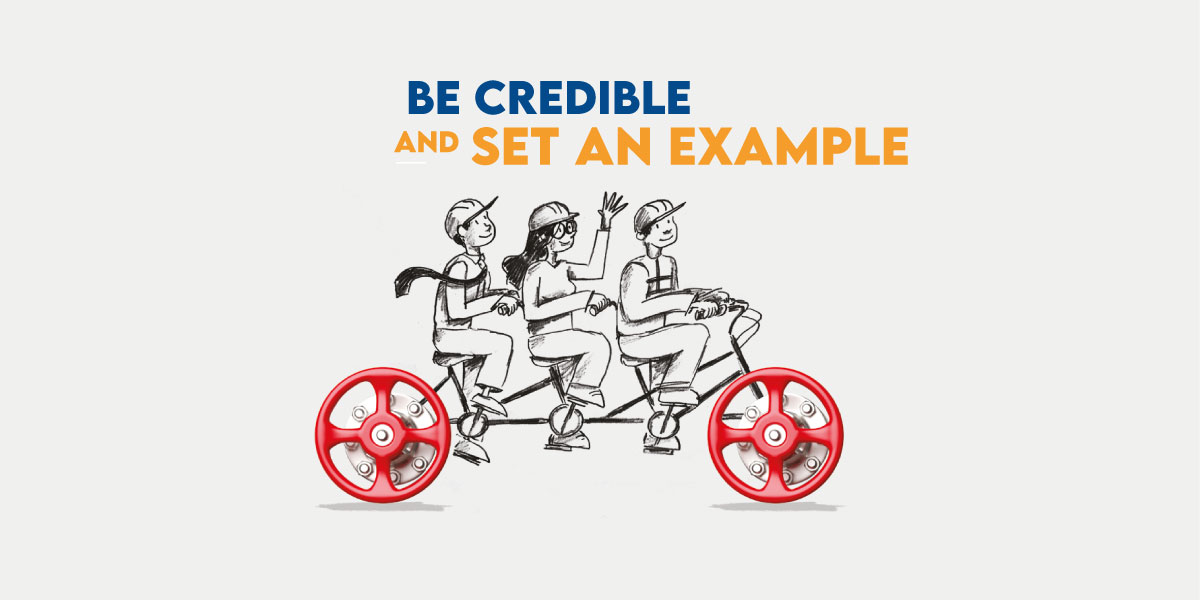What does safety leadership look like in a changing, complex and uncertain world?
 What does safety leadership look like in a changing, complex and uncertain world?
What does safety leadership look like in a changing, complex and uncertain world?
Resource shortages, geopolitical conflicts, the climate crisis, the ecological and energy transition—at-risk industries are facing a context that is characterized by increasing uncertainty. Hazards are part of everyday life. At this time, are classical safety leadership models still relevant? Is yesterday’s leadership the same as tomorrows? Which dimensions of safety leadership can we still rely on?
The first step: accepting uncertainty
Uncertainty is not a new phenomenon in our organizations, our working practices, or our lives... but the past few years have been marked by increasingly frequent, and more intense events that disrupt current ways of working.
However, it is often the case that the default response of organizations is to deny that there is any uncertainty. “Our aversion to ambiguity and uncertainty is much higher than we think, and, from an objective point of view, irrational”, states Olivier Sibony, a professor specializing in strategic decision-making at HEC Paris.
This denial of uncertainty takes the form of “overconfidence in our ability to predict the future, to dispel uncertainty, to map out the path”, he continues. Therefore, the first step in preparing for uncertainty is to accept and acknowledge it.

All of our most basic management modes, the ones we don’t even think about – plans, budgets, objectives – all of that is based on the denial of uncertainty.
Olivier Sibony - excerpt from the conference “What does leadership look like in a changing, complex and uncertain world?”, Les Rencontres de la culture de sécurité, 22 November 2022
Under uncertainty, the safety vision becomes unclear
Uncertainty shakes up traditional models of safety leadership. Simply because the first principle of leadership – creating the vision – is fundamentally challenged. In an uncertain situation, we don’t know what to do. And the first thing to do is to acknowledge it.
But maybe this is for the best, because new leadership styles are emerging. Are we seeing the end of charismatic leaders? Or top-down safety leadership? To be replaced by a more distributed form of leadership, leaders whose profiles are more diverse and flexible, who act both for and within groups, who work closer to the field, and who are guided by shared values.
5 tips for rethinking safety leadership under uncertainty
1. From ‘create the safety vision’ to ‘create a shared vision’
Faced with uncertainty, the safety vision must be built collectively. The aim is to create a shared vision. This requires the leader to be much humbler, and change the message they share with colleagues. It is no longer a question of “follow me, I know what to do”, but instead, “I don’t know what to do, let’s work this out together”.
2. Even when you’re lost in the fog, take action
It can be tempting, when you don’t know what to do, to reassure yourself with a ‘wait and see’ approach. In reality, this can be very dangerous—reality doesn’t wait and, when you do decide to take action, it is probably too late. Faced with uncertainty, you must:
- choose a direction, and start moving towards it, even if you don’t know what awaits you on the way,
- accept uncertainty, envisage multiple scenarios, and be ready to improvise based on these scenarios... This will definitely not turn out the way you initially expected.
3. Draw upon the team’s resources, and adopt a more distributed leadership style
In an uncertain context, it is important to draw upon multiple points of view, experiences, and profiles in order to deal with complex, new situations. We are seeing a shift from top-down leadership to distributed leadership, where the challenge is to encourage a variety of leaders, working as close to the field as possible.
Being able to draw upon the group’s resources, cooperation within and between teams, dialogue and shared vigilance is a real asset.
4. Our forecasting models are broken... focus on prudent trade-offs
In a situation of uncertainty, any calculations, scenarios, and probabilities become obsolete. Trade-offs become very difficult. The only thing we can do is to make ‘prudent’ trade-offs:
- Hold a ‘decision-making round table’ to discuss the different challenges: ethical, financial, production, safety, etc.
- Make safety the holy grail
- Emphasize the importance of trade-offs
- Spend even more time in the field to better-understand what really happens on the ground
5. Maintain a focus on key values, as reference points for action
The compass that will guide you through the storm is what all of you, as a group, consider to be most important! The role of the leader is to refer to these key principles, which will serve as reference points in trade-offs and decision-making.
The role of the leader under uncertainty
- To promote the values and principles that guide action, to give meaning
- Be humble
- Structure doubt
- Create the conditions and a context that supports the emergence of a shared vision
- Support leadership in others
- Encourage teamwork, and cooperation between different teams
And don’t forget, a leader isn’t necessarily a manager!



